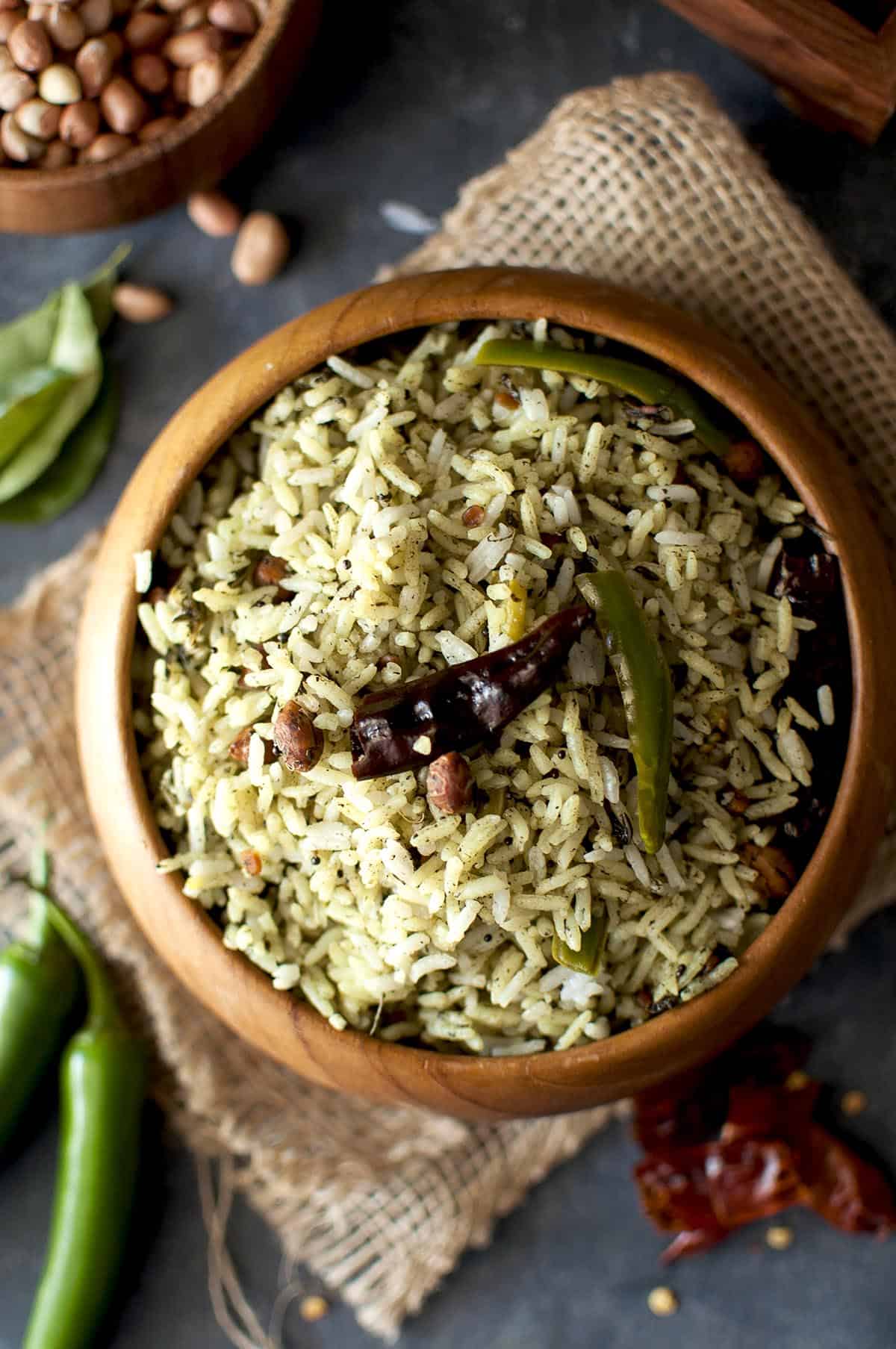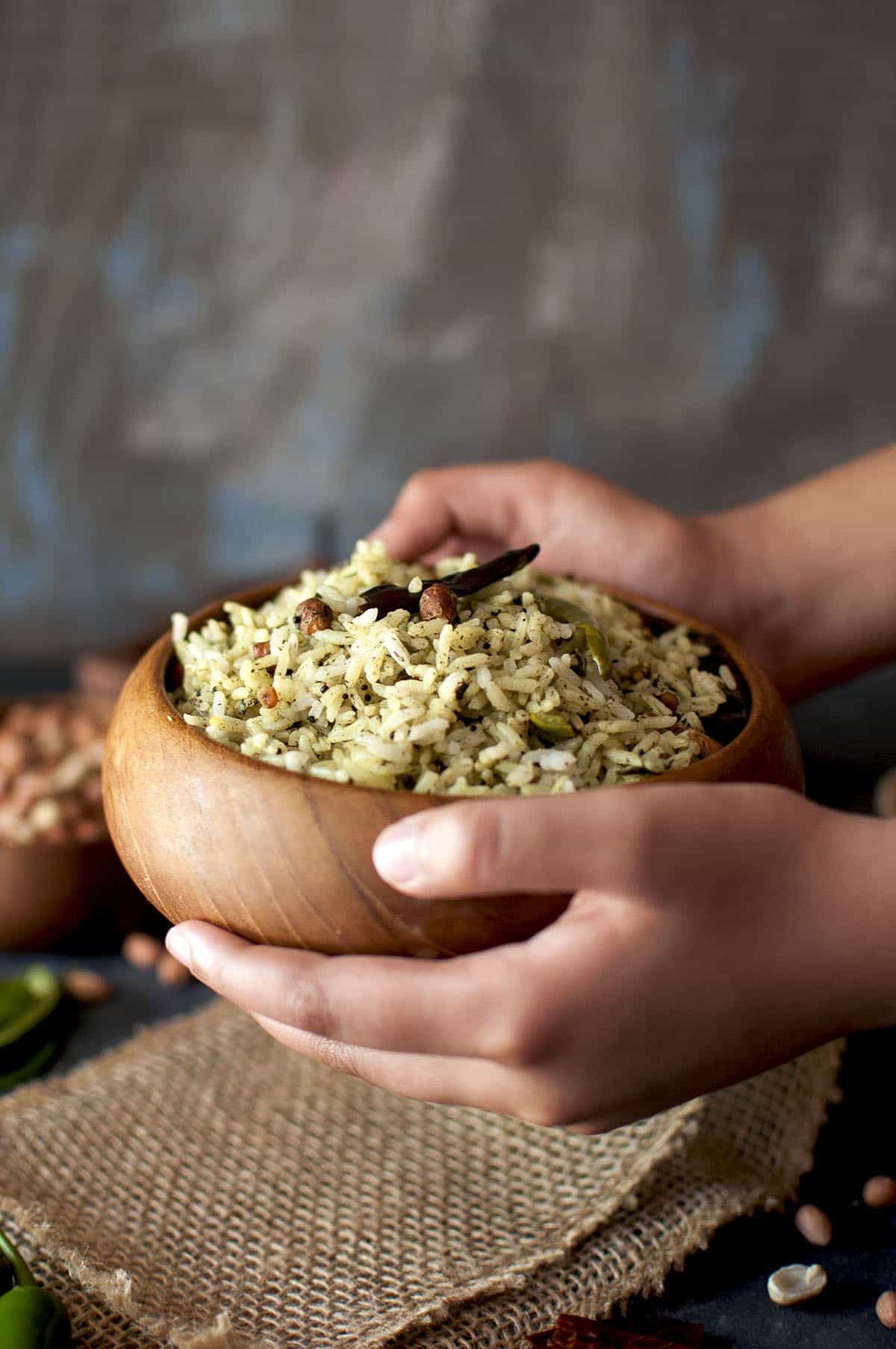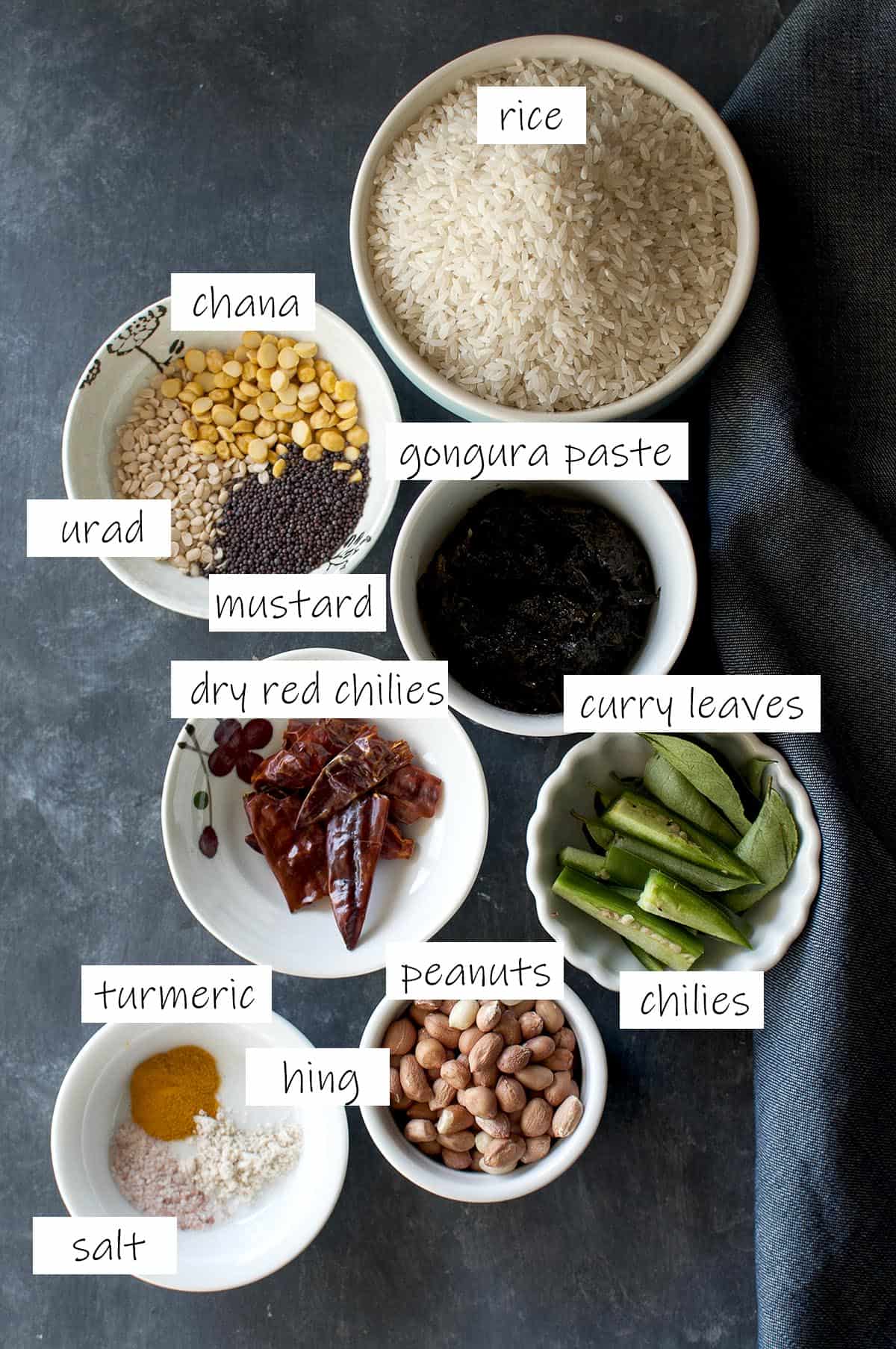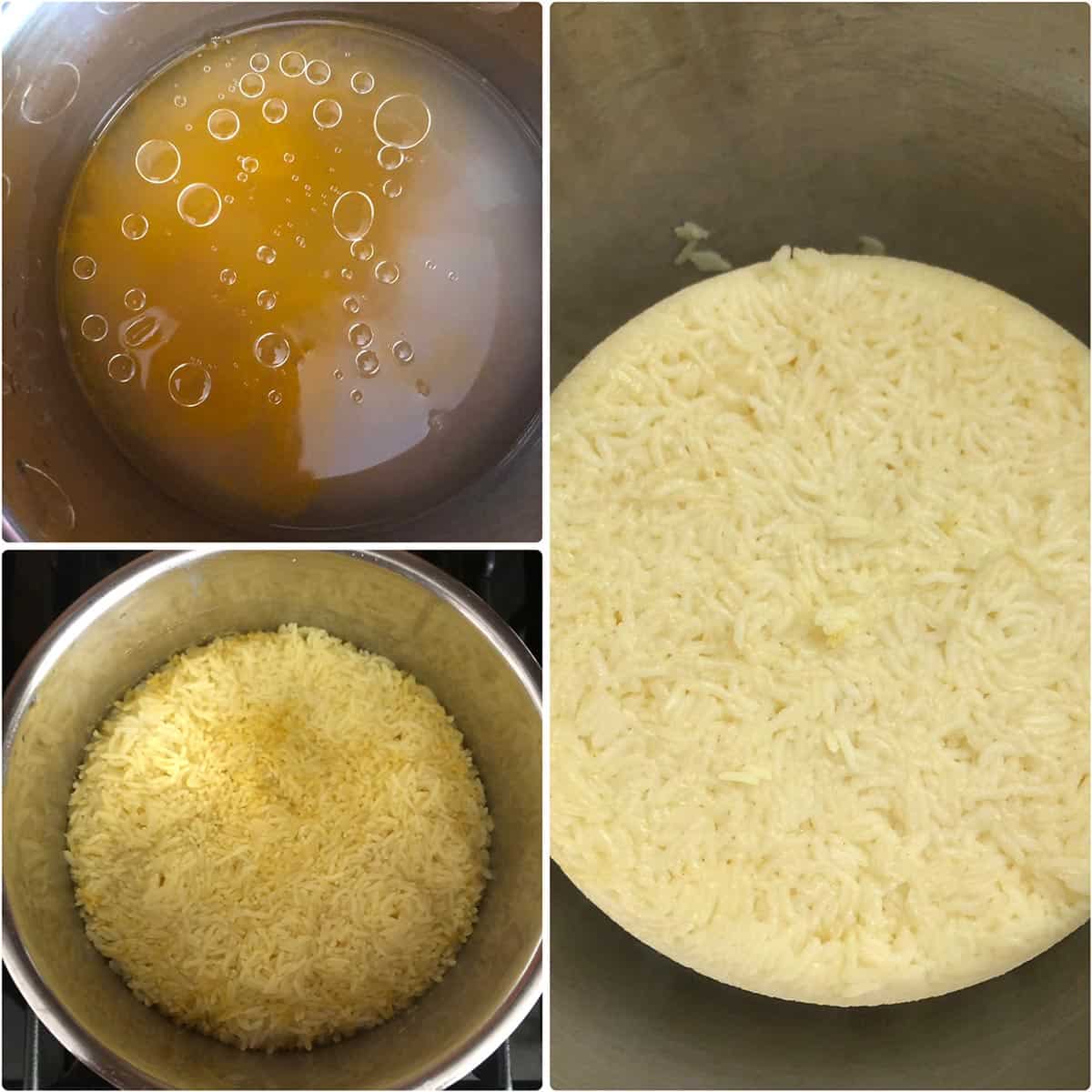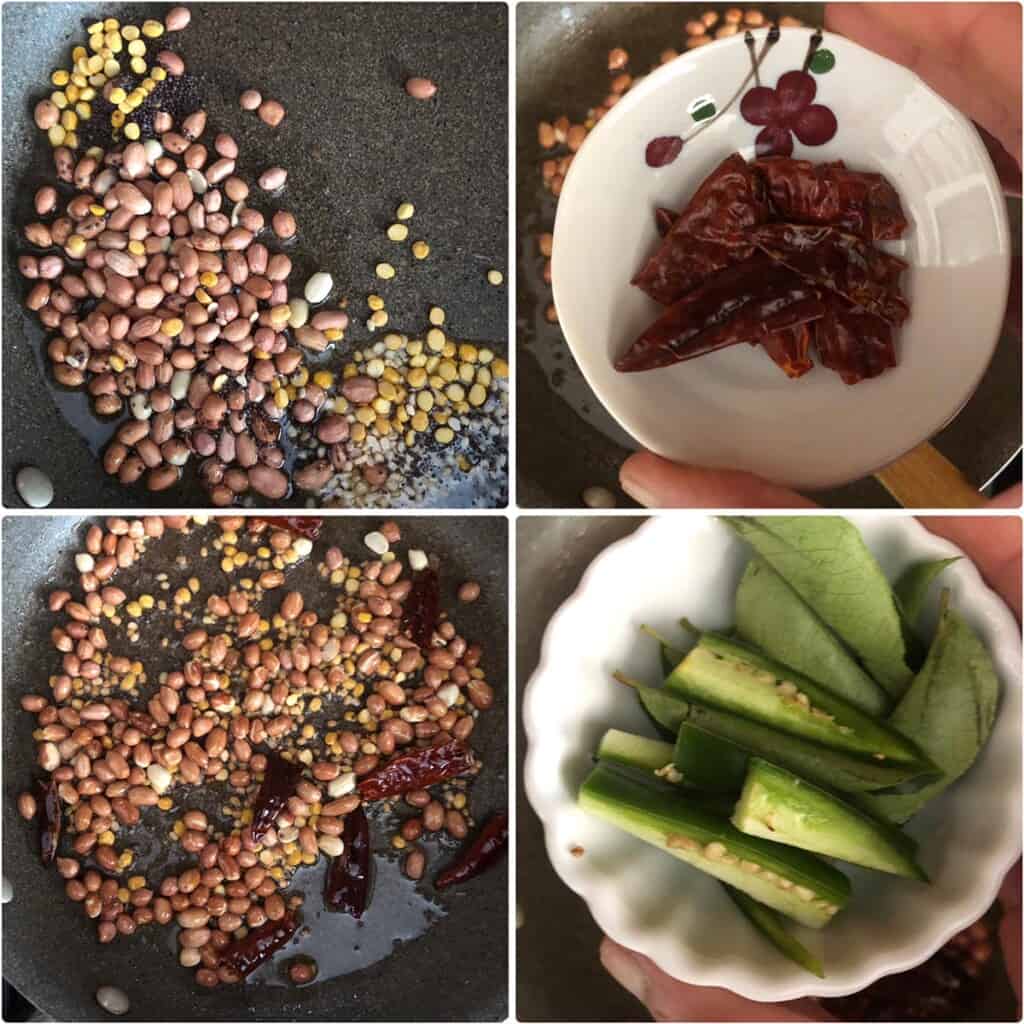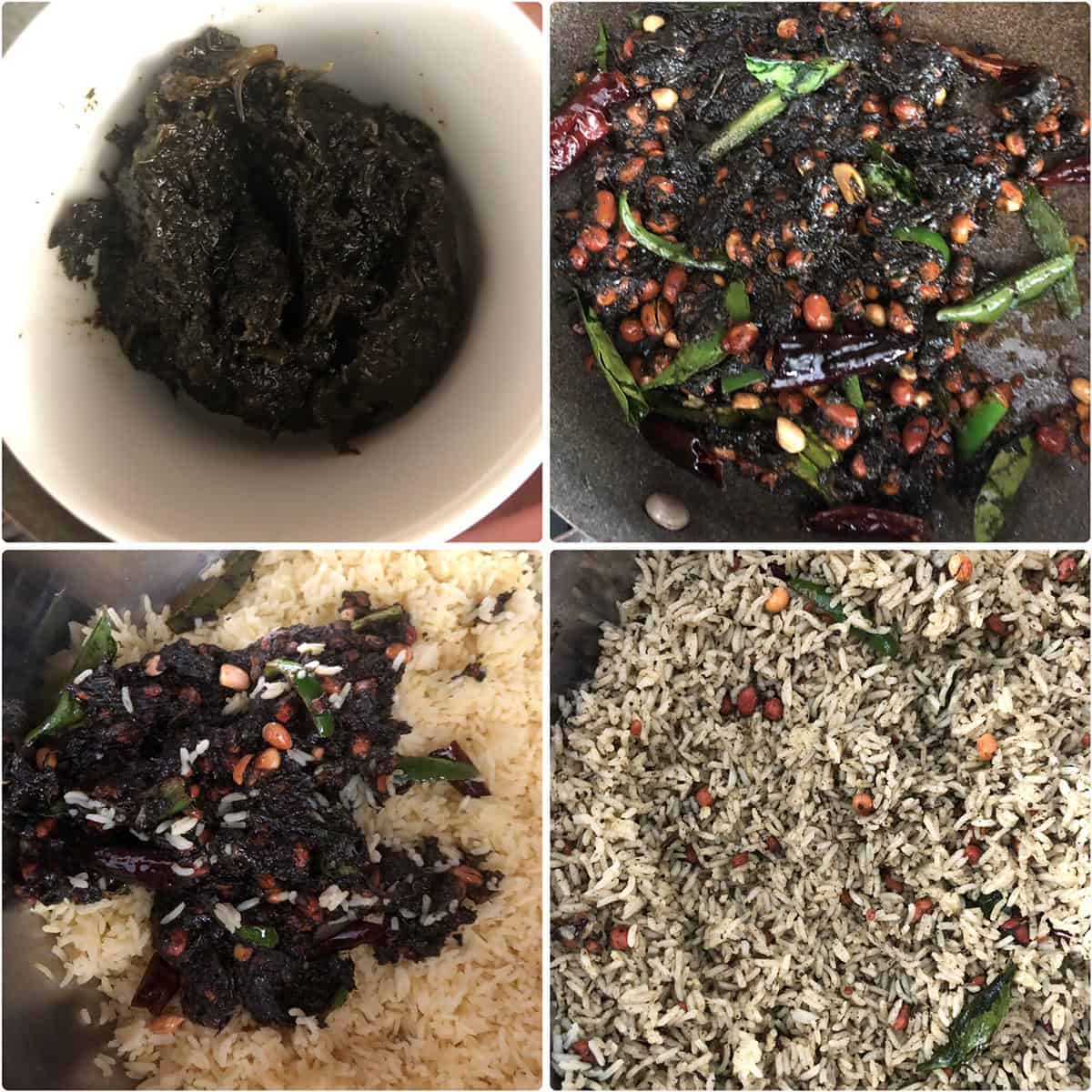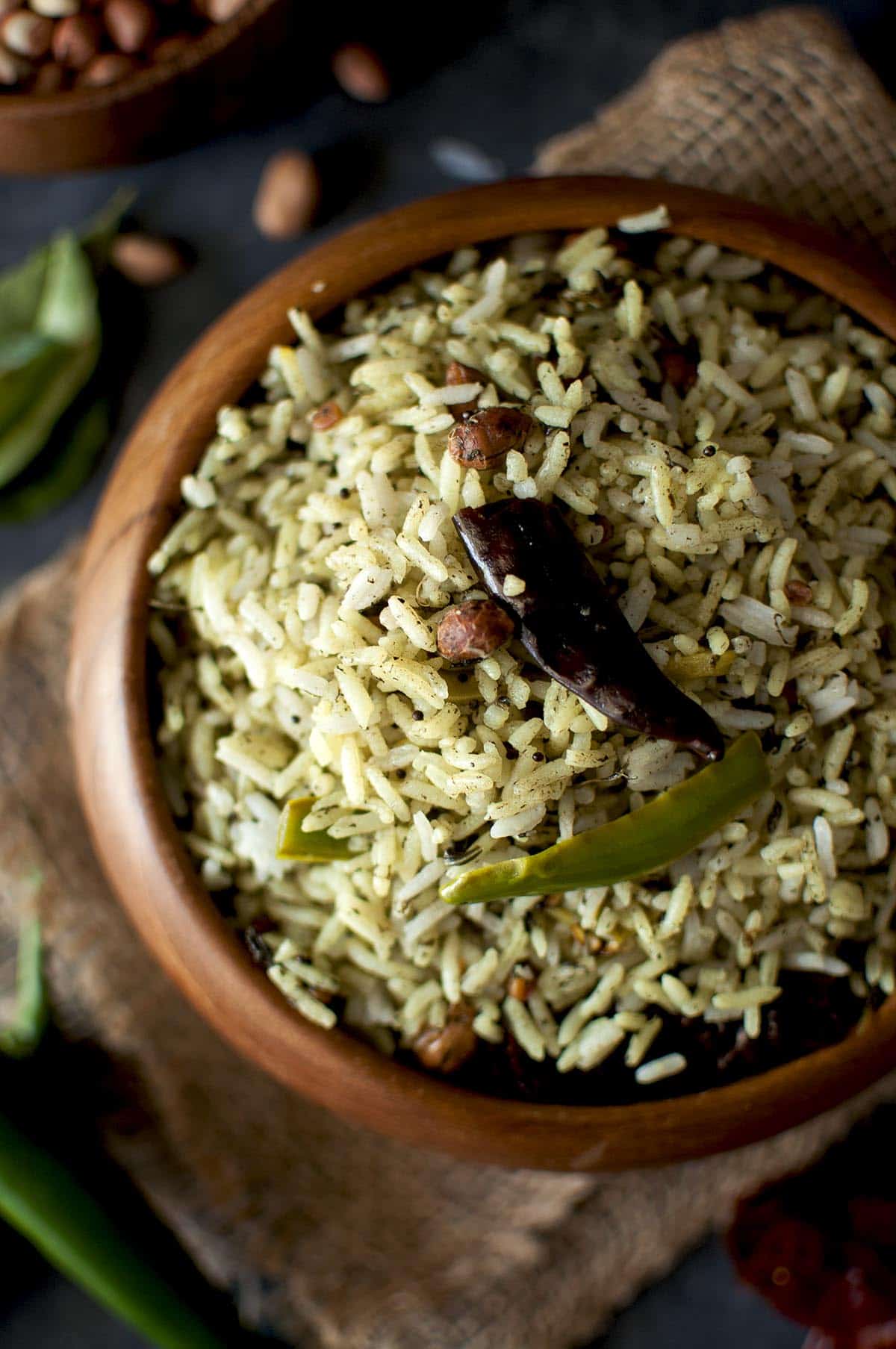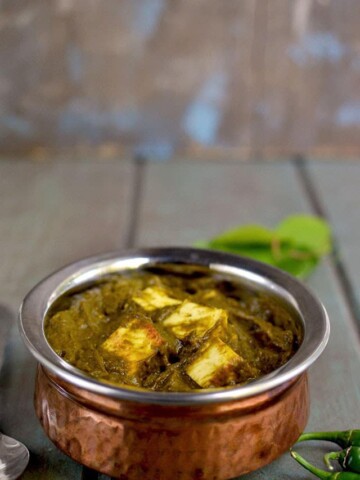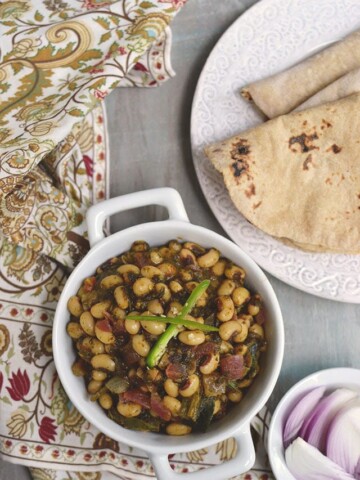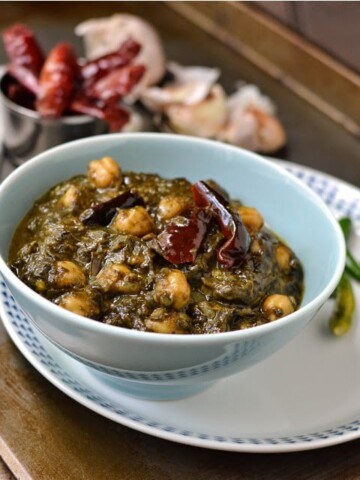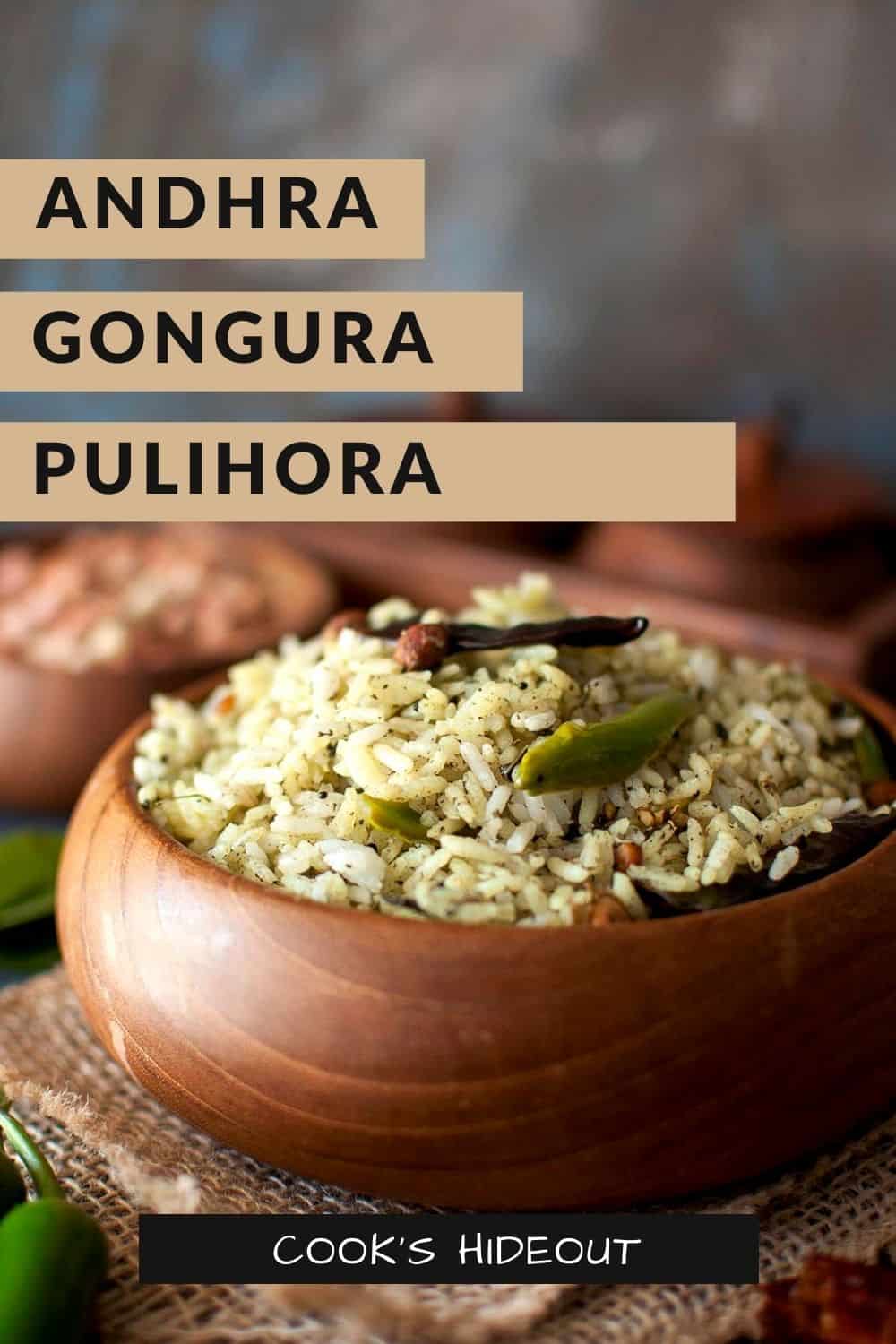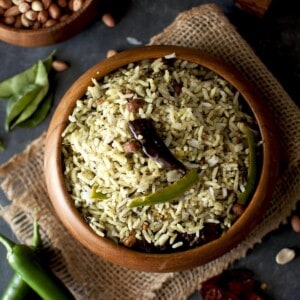This gongura recipe cannot be simpler. There are no spices to grind or ingredients to prep. A very easy to make dish that comes together in about 40 minutes. Make this no-onion, no-garlic rice recipe for any festival or celebration and enjoy!!
About the Recipe
Gongura, known as roselle leaves or red sorrel leaves in English, is a widely used in leafy vegetable in Andhra cuisine. It has a characteristic tart-sour taste that lends a delicious flavor to spicy dishes. Traditionally, gongura leaves were used mostly to make pachadi or pickle. But nowadays it is being used to make trendy recipes like biryani and pulao as well. Andhra style pulihora or puliyodharai is traditionally flavored with a souring ingredient. For example lemon in this lemon oats or tamarind in this chintapandu pulihora recipes. In this gongura pulihora, rosells leaves give the dish it’s characteristic tangy-sour taste. This is a great rice dish to make during festivals because it has no-onion or garlic. It is also perfect to pack for lunchboxes or for picnics. Serve with some plain yogurt or simple dal for a wholesome meal.
Ingredients
For the details of the exact quantities of each ingredient and the list of ingredients needed, check the printable recipe card below. Here are the ingredients you need to make gongura pulihora:
Gongura: sold as bunches in Indian grocery stores. They are usually not available all year long.They come in 2 varieties - red and white. You can use either one to make this pulihora. But note that red variety is slightly more sour or tart than the white.I usually make a paste of fresh gongura leaves (check how-to in the section below) and store in the fridge. This lasts for at least 2-3 months if stored properly.If you can’t find fresh, then cans of cooked gongura is also available in Indian groceries. Look for these in the pickles aisle. Please note that these pre-cooked greens have salt added as preservative. So make sure to adjust the amount of salt in the recipe.Rice - I use sonamasoori rice. Any medium grain rice that does not get too sticky when cooked will work. Basmati is not traditionally used, but that is what you have, then feel free to use it.
Other Ingredients you need to make this recipe are:
Raw peanuts or you can also use roasted, unsalted peanutsGreen chilies, curry leavesTempering ingredients - chana and urad dal, mustard seeds, dry red chilies, asafetida (hing)Salt, turmeric
How to prepare Gongura leaves
I buy fresh gongura when available from the Indian grocery. The stalks are sometimes too woody, so pluck just the leaves. Tender stems are OK to use. Place the leaves in a colander and wash them thoroughly. Then let them dry on a kitchen towel. If you are going to use them up right away, then they don’t have to be very dry. But if you want to store the leaves for later, then let them dry completely. Once dry, finely chop the leaves. Heat a medium sized pan on medium heat and add the cleaned gongura leaves. There is no need to add any oil. Leaves will wilt and become a slightly sticky mixture. Turn off the stove and add salt. Mix well. The paste is ready to use right away or to be stored for later.
Instructions
For the detailed instructions on how to make the recipe with exact timings, check the printable recipe card below. Here is how to make this easy gongura pulihora recipe: Start by making the rice: Soak rice for at least 15 minutes. Combine rice with water, turmeric and salt in a pressure cooker or Instant Pot. Cook rice such that the grains are separate. Once the rice is done, transfer it on to a wide bowl or plate and set aside to cool. Heat oil in a sauté pan, add peanuts, chana and urad dal. Cook till they are lightly brown. Add mustard seeds, dry red chilies, asafetida and cook till the seeds start to splutter. Add curry leaves and green chilies and cook for 30 seconds. Stir in the chopped gongura to the pan. Cook till the leaves wilt and everything comes together into a sticky mass. Season with salt. If using gongura paste, then add it and mix well to incorporate with the other ingredients. Add a splash of water, if the mixture looks too thick. Turn off the heat. Add the gongura mixture to the cooked rice. Mix gently to make sure that the grains don’t break. Taste and adjust the seasoning by adding more salt or lemon juice*. Serve warm or at room temperature.
Expert Tips
I prefer using sona masoori rice for this gongura pulihora recipe. You can use any medium or long grain rice variety. Make sure that it does not get sticky once cooked.Gongura leaves come in 2 varieties - red and white. You can use either one to make this pulihora. But note that red variety is slightly more sour or tart than the white.I usually make a paste of fresh gongura leaves and store in the fridge. This lasts for at least 2-3 months if stored properly.To make the paste, wash and dry the leaves thoroughly by laying them on a kitchen towel. Once completely dry, finely chop the leaves., add them to a preheated sauté pan and cook on medium heat. The leaves will wilt completely and form a sticky mixture. Turn off the heat and add enough salt.If you want to store the gongura paste for longer, then add more salt because it adds as a preservative. If you don’t add enough, then the mixture might get moldy and spoil. When you are using the paste in dishes, note that it already has enough salt, so add sparingly.If you can’t find fresh, then cans of cooked gongura is also available in Indian groceries. Look for these in the pickles aisle. Please note that these pre-cooked greens have salt added as preservative. So make sure to adjust the amount of salt in the recipe.Sometimes gongura leaves may not taste sour enough. Then add a little bit of lemon juice or even tamarind paste to compensate for the sourness.
You might also like
Here are a few more gongura recipes that you might like: I love hearing from you!! If you’ve tried this and liked it, then don’t forget to let me know. Give a star rating and let me know in the comments below. Also tag me in your creations on Instagram @cooks_hideout. I love sharing photos when people make my recipes. You can use the hashtag #cookshideout too.
